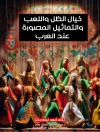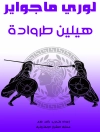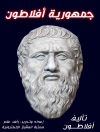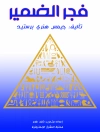This volume will examine the varied roles that women and children play in period of warfare, which in most cases deviate from their perceived role as noncombatants. Using social theory about the nature of sex, gender and age in thinking about vulnerabilities to different groups during warfare, this collection of studies focuses on the broader impacts of war both during warfare but also long after the conflict is over.
The volume will show that during periods of violence and warfare, many suffer beyond those individuals directly involved in battle. From pre-Hispanic Peru to Ming dynasty Mongolia to the Civil War-era United States to the present, warfare has been and is a public health disaster, particularly for women and children. Individuals and populations suffer from displacement, sometimes permanently, due to loss of food and resources and an increased risk of contracting communicable diseases, which results from the poor conditions and tight spaces presentin most refugee camps, ancient and modern.
Bioarchaeology can provide a more nuanced lens through which to examine the effects of warfare on life, morbidity, and mortality, bringing individuals not traditionally considered by studies of warfare and prolonged violence into focus. Inclusion of these groups in discussions of warfare can increase our understanding of not only the biological but also the social meaning and costs of warfare.
Inhaltsverzeichnis
Chapter 1: The Bioarchaeology of Women, Children and Other Groups in Times of War.- Chapter 2: Shattered Mirrors: Gender, Age, and Westernized Interpretations of War (and Violence) in the Past.- Chapter 3: War at the Door: Evolutionary Considerations of Warfare and Female Fighters.- Chapter 4: Politics and Social Substitution in Total War: Exploring the Treatment of Combatants and Noncombatants during the Mississippian Period of the Central Illinois Valley.- Chapter 5: When Elites Wage War: Violence and Social Coercion along the Chaco Meridian.- Chapter 6: Caught in a Cataclysm: Effects of Pueblo Warfare on Noncombatants in the Northern Southwest.- Chapter 7: The Poetics of Annihilation: On the Presence of Women and Children at Massacre Sites in the Ancient Southwest.- Chapter 8: Army Healthcare for Sable Soldiers during the American Civil War.- Chapter 9: Potential Applications of Public Health Tools to Bioarchaeological Datasets: The ‘Dirty War Index’ and the Biological Costs of Armed Conflict for Children.- Chapter 10: Conclusion: The Deeper You Dig, the Dirtier it Gets.
Über den Autor
Debra L. Martin is an expert in human osteology and bioarchaeology/forensics which involves the analysis of skeletonized human remains from archaeological as well as historic and contemporary settings. She conducts research in the areas of nonlethal and lethal violence and the relationship between human violence and inequality, gender differences and disease. She is particularly interested in groups living in risky and challenging desert environments. She is the co-Editor of the International Journal of Osteoarchaeology, as well as an associate editor for the Yearbook of Physical Anthropology. She is founding Editor for Bioarchaeology and Social Theory Series, Springer. Her recent publications include co-editing Bioarchaeology of Violence (UPF), Bioarchaeological and Forensic Perspectives on Violence (Cambridge) and Commingled and Disarticulated Human Remains, as well as co-authoring Bioarchaeology of Climate Change and Violence (Springer).
Caryn E. Tegtmeyer holds a B.S. degree in Anthropology and a B.A. degree in Criminal Justice from Michigan State University, an M.A. degree in Anthropology from Texas State University, and is currently working to complete her Ph.D from the University of Nevada, Las Vegas. She has co-organized symposia focusing on understanding the role of women and children in times of War at the American Anthropological Association 2014 Annual Meeting and on implications of injury recidivism in bioarchaeological and forensic contexts at the American Association of Physical Anthropologists 2016 Annual Meeting. Her research interests encompass both the subfields of bioarchaeology and forensic anthropology. She is currently conducting research on trauma and health for a prehistoric population in the American Southwest, as well as collecting data on homicide patterns and violent death in Clark County, Nevada.












